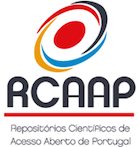Autonomic Dysreflexia: What Level of Knowledge in Portuguese Emergency Rooms?
DOI:
https://doi.org/10.25759/spmfr.212Keywords:
Autonomic Dysreflexia, Clinical Competence, Emergencies, Emergency Service, Hospital, Health Knowledge, Attitudes, PracticeAbstract
Introduction: Autonomic dysreflexia is a complication after spinal cord injury and occurs in spinal injuries at or above T6. Due to its unexpected beginning and paroxistic hypertension, patients often go to the Emergency Room , where health professionals have limited experience/contact on treating this condition. This can result in a delay in diagnosis and appropriate treatment resulting in potentially serious complications, such as stroke, seizures and even death.
The study goal was to determine the level of knowledge about autonomic dysreflexia of a convenience sample of physicians working at an Emergency Room in Portuguese Hospitals and to suggest measures to improve their knowledge about this syndrome.
Material and Methods: We created an anonymous online multiple choice questionnaire with seven questions about autonomic dysreflexia and their treatment in the Emergency Room for physicians of Internal Medicine working in Portuguese Hospitals.
Results: We obtained 41 responses. Of these, 31 of the doctors knew what autonomic dysreflexia is, however only 9 had observed a patient with this syndrome. Eleven knew the value of the normal systolic pressure in tetraplegic patients, but 8 did not know the symptoms of autonomic dysreflexia and 10 did not know how to treat a patient with this condition. When we asked about their level of knowledge about autonomic dysreflexia and its treatment, thirty of respondents assumed that this was “insufficient” and 8 said that “they didn`t know anything about this.” For the majority (33) it would be “very useful” that these patients carried an informative card about autonomic dysreflexia when they came to Emergency Room.
Conclusions: It is vital to recognize this clinical syndrome that can lead to death, and with proper and timely treatment reduces possible complications. Since this is a rare situation, knowledge of medical staff of the Emergency Room of our hospitals may not be sufficient in this area. Thus, the Physical Medicine and Rehabilitation plays an important role in providing further teaching initiatives and information about autonomic dysreflexia.
Downloads
References
National Spinal Cord Injury Statistical Center. Facts and figures at a glance. Birmingham: University of Alabama at Birmingham; 2013.
DeLisa, Joel A. Physical Medicine & Rehabilitation: Principles and Practice. 4th ed. Philadelphia: Lippincott Williams & Wilkins; 2005.
Roque V, Cunha I, Rocha A, Andrade M. Disfunções autonómicas após lesão medular. Rev Soc Port Med Fis Reabil. 2013; 24: 43-51.
Andrade L, Araújo E, Andrade K, Souza D, Garcia T, Chianca T. Disreflexia autonômica e intervenções de enfermagem para pacientes com lesão medular. Rev Esc Enferm USP. 2013; 47:93-100
Khastgir J, Drake M, Abrams P. Recognition and effective management of autonomic dysreflexia in spinal cord injuries. Expert Opin Pharmacother. 2007; 8:945-56.
Jackson C, Acland R. Knowledge of autonomic dysreflexia in the emergency department. Emerg Med J. 2011; 28:866-9.
Moeller B, Scheinberg D. Autonomic dysreflexia in injuries below the sixth thoracic segment. JAMA. 1973; 224:1295.
Bycroft J, Shergill I, Choong E, Arya N, Shah P. Autonomic dysreflexia: a medical emergency. Postgrad Med J. 2005; 81:232–5.
Gunduz H, Binak D. Autonomic dysreflexia: An important cardiovascular complication in spinal cord injury patients. Cardiol Jl. 2012; 19:215-9.
Krassioukov A, Warburton D, Teasell R, Janice J, The SCIRE Research Team. A systematic review of the management of autonomic dysreflexia following spinal cord injury. Arch Phys Med Rehabil. 2011; 90: 682–95.
Kulcu D, Akbas B, Citci B, Cihangiroglu. Case report: autonomic dysreflexia in a man with multiple sclerosis. J Spinal Cord Med. 2009; 32:198-203.
Cragg J, Krassioukov A. Five things to know about autonomic dysreflexia. CMAJ. 2012; 184:66.
Somani BK. Autonomic dysreflexia: a medical emergency with spinal cord injury. Int J Clin Pract. 2009;63:350-2.
Showkathali R, Antionio T. Autonomic dysreflexia: a medical emergency. J R Soc Med. 2007; 100:382–3.
Popa C, Popa F, Grigorean VT, Onose G, Sandu AM, Popescu M, et al. Vascular disfunctions following spinal cord injury. J Med Life. 2010; 3:275-85.
PVA. Acute management of autonomic dysreflexia: adults with spinal cord injury presenting to health-care facilities. 2nd ed. Washington: Paralyzed Veterans of America; 2001
Furlan J. Autonomic Dysreflexia: a clinical emergency. J Trauma Acute Care Surg. 2013; 75: 496-500.
Milligan J, Lee J, McMillan C, Klassen H. Autonomic dysreflexia: Recognizing a common serious condition in patients with spinal cord injury.Can Fam Physician. 2012;58:831-5.
McGillvray C, Hitzig S, Craven B, Tonack M, Krassioukov A. Evaluating knowledge of autonomic dysreflexia among individuals with spinal cord injury and their families. J Spinal Cord Med. 2009;32:54-62.
Downloads
How to Cite
Issue
Section
License
Copyright statement
Authors must also submit a copyright statement (as seen below) on article submission.
To the Editor-in-chief of the SPMFR Journal:
The below signed author(s) hereby state that the article
________________________________________ (ref. MFR_________) is
an original unpublished work and all facts stated are a product of the author(s) investigation. This article does not violate any copyright laws or privacy statements. The author(s) also hereby confirm that there is no conflict of interest's issues in this article.
By submitting this article the author(s) agree that after publication all copyrights belong to the SPMFR Journal.
Signed by all authors
Date:
Names (capital letters):
Signatures:
The SPMFR Journal’s contents are follow a Creative Commons licence. After publication the authors can hand out the articles as long as the SPMFR Journal is credited.



